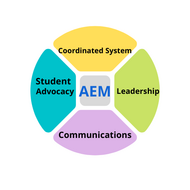Webinar: Access for Every Student with Accessible Educational Materials (AEM) & Technologies
(View Complete Item Description)Join this session to gain insight on easy-to-implement techniques to create educational materials and vet technology tools for accessibility. Participants will learn how to create accessible Google and Word docs and how to quickly decide which tools should be used and which ones should be left on the curb! While it is important to ensure ed tech tools meet accessibility requirements, we recognize that educators and practitioners have many demands already placed on them. Our goal for this session is to have simple ways to create accessible educational materials with immediate implementation and to demystify vetting for accessibility. That way, we can direct our limited resources to those tools that will better meet the needs of all of our learners. Learning Objectives: 1. Define what it means for an educational tool to be “accessible” 2. Perform a simple test of keyboard (or switch) accessibility to identify any significant barriers on an educator selected tool that might keep groups of learners from using the app for learning. 3. Use a built-in accessibility features on devices to quickly test how well an educational app meets basic accessibility requirements before it can be considered for use with learners 4. Create accessible materials using Google and Word docs
Material Type: Lecture, Reading




















